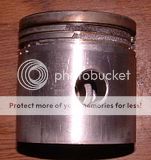Well I'm going to time my car and I've read the static timing posts, pages and articles but I can't help but think, is the factory timing the best? Then there's this John Twist video about emission TR6's and how they were retarded for emissions.
https://www.youtube.com/watch?v=dmxuqA4qvVI&list=UU40j4KqUJPMVv4FQ29ro-xQ
Not sure where my car was timed when I got it but it ran hot and kinda slow. I messed with it and got way more power and it never ran hot. although I never heard any pinging I'm simply not sure of the real numbers in degrees where I was at before and where I ended up. Now if you read my build thread you will see that I blew up my distributor. So now I'm starting over. I would like your thoughts on custom timing settings and vac hooked and not hooked up. I know my solid roller cammed Trans Am loves 25 @ idle and 38.5 all in per the dyno tune.. Anyone ever play with the timing and get better results?
My plan is to static time the motor then dial in the carbs then play with the timing and read the plugs for the air fuel..
https://www.youtube.com/watch?v=dmxuqA4qvVI&list=UU40j4KqUJPMVv4FQ29ro-xQ
Not sure where my car was timed when I got it but it ran hot and kinda slow. I messed with it and got way more power and it never ran hot. although I never heard any pinging I'm simply not sure of the real numbers in degrees where I was at before and where I ended up. Now if you read my build thread you will see that I blew up my distributor. So now I'm starting over. I would like your thoughts on custom timing settings and vac hooked and not hooked up. I know my solid roller cammed Trans Am loves 25 @ idle and 38.5 all in per the dyno tune.. Anyone ever play with the timing and get better results?
My plan is to static time the motor then dial in the carbs then play with the timing and read the plugs for the air fuel..

 Hi Guest!
Hi Guest!

 smilie in place of the real @
smilie in place of the real @
 Pretty Please - add it to our Events forum(s) and add to the calendar! >>
Pretty Please - add it to our Events forum(s) and add to the calendar! >> 
